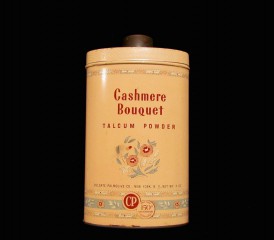Woman Wins $13M for Deadly Asbestos in Talcum Powder
Legislation & LitigationWritten by Tim Povtak | Edited by Walter Pacheco

A California woman won a $13 million lawsuit against Colgate-Palmolive after a jury determined she developed mesothelioma from asbestos in the company’s Cashmere Bouquet talcum powder.
Judith Winkel, 73, told the court she used the popular scented talcum powder from 1961 to 1976.
Although researchers have debated the connection between talc and cancer for years, last week’s verdict was the first against Colgate-Palmolive for asbestos exposure from commercial talcum powder.
Talc, one of the world’s softest minerals, has been mined from deposits interwoven with asbestos fibers. Asbestos causes mesothelioma, an often terminal cancer.
Officials for Colgate-Palmolive, which sold the Cashmere Bouquet brand in 1995, rejected the Los Angeles jury’s verdict, saying the company’s talcum powder was not responsible for Winkel’s cancer.
“Cashmere Bouquet did not harm Mrs. Winkel. There was a clear absence of proof connecting any disease to our product,” Colgate-Palmolive attorney Faith Gay argued during the case, according to FairWarning.Org.
Asbestos Is Still Used in Many Products
Talc still is used widely today in many products, including pharmaceuticals and cosmetics. It is coveted for its ability to improve textural feel and to absorb moisture.
It also is used in chalk, rubber and ceramics. Manufacturers consistently report their talc is free of asbestos or at least below detection limits.
The connection between talc and asbestos involves the close proximity of the two minerals on the earth’s surface. Tremolite, which is one type of asbestos, is often found in large amounts of other minerals, particularly vermiculite and talc.
Talc miners and millers are at a much higher risk for developing lung cancer, mesothelioma and other respiratory conditions.
Microscopic asbestos fibers can be inhaled or ingested unknowingly and sit dormant for decades before causing any health problems. The latency period for mesothelioma can range from 10-50 years.
The U.S. Food and Drug Administration (FDA) completed an extensive testing of cosmetics and talc products five years ago and found no asbestos fibers. Yet the results were labeled by the FDA as “informative” and were not conclusive. It stopped short of saying that no asbestos-contaminated talc was being sold by retailers in the U.S.

We get your case in front of the right mesothelioma law firm and stay by your side so you can focus on your health.
Get Legal HelpAsbestos Lawsuits Against Talc Suppliers
Talc suppliers in the past have paid damages or agreed to settlements for asbestos-related illnesses in association with their industrial-grade talc. Those damages often went to factory workers who made or used the talc products in an industrial setting.
In 2013, a jury found talc supplier Whittaker, Clark & Daniels responsible for a New Jersey woman’s mesothelioma. Court records show the factory clothes her father brought home were covered in asbestos-laced talc. The jury awarded her $2 million.
Winkel and her husband, John Winkel, both of Santa Barbara, California, will receive $12.4 million from Colgate-Palmolive, which was deemed 95 percent responsible for her diagnosis. Four other companies that might have exposed her to asbestos are responsible for the other five percent.
The couple, in a separate out-of-court settlement that followed, also received undisclosed punitive damages.
Colgate-Palmolive, according to court testimony, was receiving talc supplies until 1985 from three different mines contaminated with asbestos.
Although the trial lasted two weeks, it took the jury only two hours of deliberation before making a determination.
“We believe that the facts and evidence presented at trial showed that Cashmere Bouquet played no part in causing the plaintiff’s illness,” a company statement shows.
Judy Winkel was diagnosed with mesothelioma in 2014. She is under the care of renowned thoracic surgeon Dr. Robert Cameron, director of the UCLA Comprehensive Mesothelioma Program.
Asbestos in Talc Also Tied to Ovarian Cancer
Studies have shown a possible link between ovarian cancer and the feminine hygiene use of talc powders contaminated by asbestos. There are hundreds of cases pending against talc suppliers.
Researchers say exposure to asbestos increases the likelihood of developing ovarian malignancies.
Toxic asbestos fibers can collect in the ovaries of women exposed to the deadly mineral. Some researchers suspect the use of talcum powder on the genitals could have led to those diagnoses.
There is evidence that shows women diagnosed with ovarian cancer from asbestos exposure often had fathers, brothers or husbands who worked with the mineral in a mine or factory.
Winkel’s case is a reminder that the toxicity of asbestos reaches far beyond insulation and construction materials where it was most popularly used in the 20th century.






